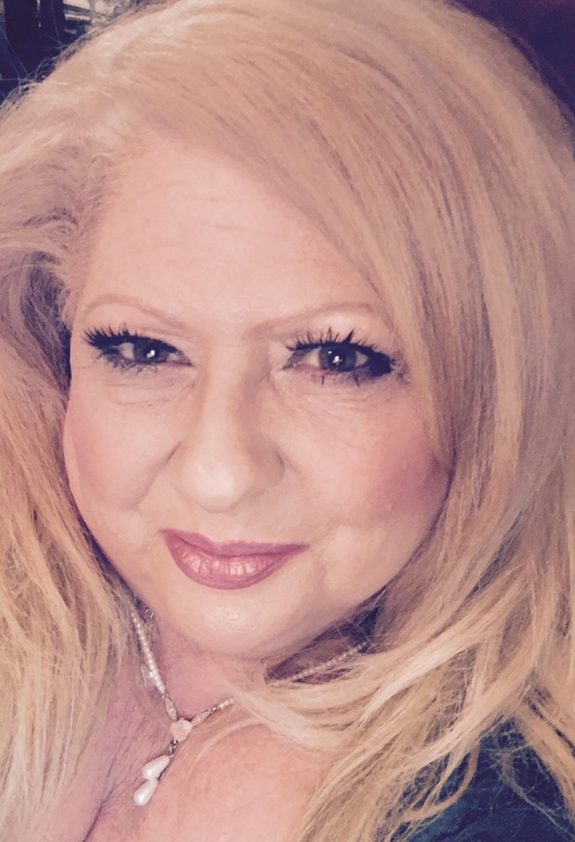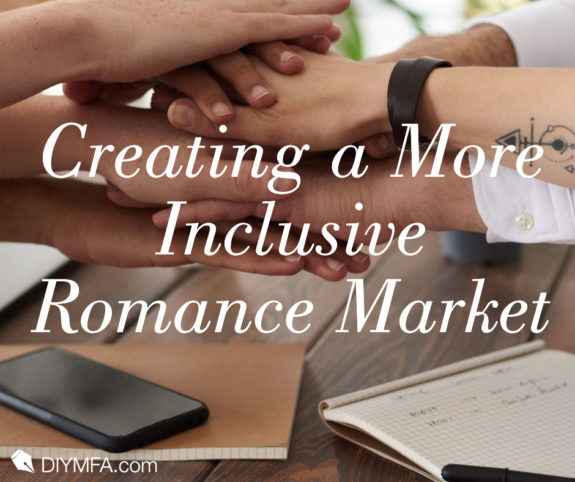Have you read the new romantic comedy that flew off the shelves and sold out on its release day? It features a protagonist with multiple sclerosis attempting to find the love of her life. She needed a confidence boost and received hilarious dating advice from her friends and MS support group. It seems the biggest hurdle was her mode of transportation—guys couldn’t get past her motorized wheelchair. The book stayed on the bestseller list for months. Don’t rack your brain too hard, such a book doesn’t exist. What a shame. Why doesn’t it exist when, for example, there are 2,300,000 people worldwide with multiple sclerosis and statistics say 1:3 are in wheelchairs? Me, for one.
Who wouldn’t want to read a story about someone like themselves? What about a hero or heroine with a mental health issue? Are you seeing a gaping hole that needs filling? If so, what are you waiting for?
Unless you’re a 24/7 cave-dweller, you’ve heard the call from publishers eager to read manuscripts dealing with diverse characters and/or situations. Why should writers of romance weave these tales of diversity? Readers are not whispering their desire for more diverse stories: they are demanding them.
I came across a published report by the owners of the romance bookstore, The Ripped Bodice, Bea and Leah Koch. “The State of Racial Diversity in Romance Publishing,” stated that for every 100 books published by the leading romance publishers in 2018 only 7.7 percent were written by people of color. Really?
After reading this study, I got to thinking how many times I’ve read an article about the need for diversity in publishing and not only the lack of diverse authors, but heroines of color, acute or chronic conditions, those living an alternative lifestyle, etc. There are so many experiences that are not explored or under explored in romance writing. Here are just a few:
Dimensions of Diversity in 2020
- Age: How about a book with an octogenarian full of wisdom rather than a lonesome shadow staring out a nursing home window?
- Disability: Any disability and make it real–a person with a disability doesn’t always overcome their challenge or win the blue ribbon.
- Gender: Regency Romance for example: Women maintain a social status secondary to men who most often are mega-wealthy and hold the title of duke, lord, or viscount. The heroine is put in a position of “winning” one of these men to enjoy the pleasantries she desires. How we love a heroine who goes against the grain.
- Race/Ethnicity: As mentioned above, the romance market is in desperate need of more romances written by and/or featuring characters of under-represented races and ethnicities. Where race includes characteristics such as skin color, ethnicity also encompasses cultural factors such as nationality, tribal affiliation, religion, language and traditions of a particular group. Showcase a custom of a culture and weave it into your romance. Just make sure it’s organic to your character’s experience.
- Religion: (faith, practices, beliefs) Consider a couple who fall in love and share opposite religious beliefs coming to a positive, or perhaps not, resolution.
- Sexual Orientation: LGBTQIA+ Stands for lesbian, gay, bisexual, transgender, intersex, queer/questioning, asexual and many other terms (such as non-binary and pansexual)
- Socio-economic Status: Not the stereotypical rags to riches. Write a story that makes a real difference in someone’s life.
Publishers aren’t calling for professional romance writers to weave a second-hand story about a protagonist living a diverse lifestyle. They are looking for the author who truly lives the struggles she writes about, not topics on which they have no life experience and assume (we know what happens when we assume) to know the daily trials of another person.
If you think of an idea for a manuscript with a diverse character, stop and ask yourself before penning the first word: Am I the right person to write this story? Is this story better told by someone with more authentic experience? I would also have the completed work read by sensitivity readers.
Here are two helpful links to guide you when writing a piece out of your area of experience:
Writing Outside Your Experience: Handle With Care
Representation in Fiction: How to Write Characters Whose Experiences Are Outside of Your Own
The call for more diverse books and authors shows no signs of slowing down. A movement ends and becomes mainstream when much of the population climbs aboard and takes hold of the new concept. Authors both diverse, independent, and otherwise would be smart to pay attention to this discussion. Are you paying attention?

Tammy Lough is an award-winning author who loves writing romance and creating unique characters who burst with personality and frequent sprinklings of humor. She is a member of Romance Writers of America, Missouri Romance Writers of America, Saturday Writers, and Missouri Writers Guild. You can connect with Tammy on her website www.TammyLough.com.







